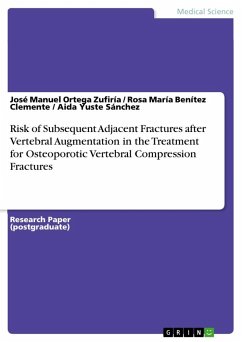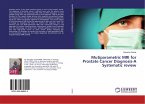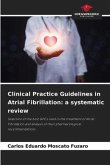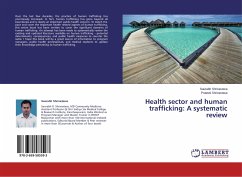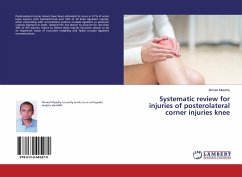Research Paper (postgraduate) from the year 2020 in the subject Medicine - Other, grade: 10.00, , course: NEUROCIRUGÍA, language: English, abstract: The aim of this study was to investigate whether percutaneous vertebral augmentation (PVA) was associated with clinical and radiological subsequent adjacent fractures.A systematic review and meta-analysis was performed searching on PubMed, EMBASE, Cochrane library, Google Scholar, web of science and ClinicalTrial.gov from the establishment of the database to January 2020. Eligible studies assessing the subsequent adjacent fractures after PVA compared with conservative treatment (CT) were incorporated. The pooled risk ratio (RR) with its 95% confidence intervals (95% CI) was used. Heterogeneity, sensitivity and publication bias analyses were performed. A total of 24 studies were considered eligible and were included finally. 20/421 patients (4.75%) had clinical subsequent adjacent fractures from PVA group, and 25/359 patients (6.96%) had from CT group, and 46/440 patients (10.45%) from PVA group and 36/444 patients (8.10%) from CT group had radiological subsequent adjacent fractures. There both had no significant difference between two groups (RR=0.67, 95%CI: [0.38, 1.19], P = 0.17)/ (RR=1.13, 95%CI: [0.75, 1.70], P = 0.576). However, in fractured vertebrae, number in PVA group was more than that in CT group (RR=1.41, 95%CI: [1.03, 1.93], P = 0.03).Collectively, currently available literature provides data showed PVA did not increase the incidence for subsequent adjacent fractures, no matter it was clinical or radiological fracture. But PVA may increase the number of fractured vertebrae.
Hinweis: Dieser Artikel kann nur an eine deutsche Lieferadresse ausgeliefert werden.
Hinweis: Dieser Artikel kann nur an eine deutsche Lieferadresse ausgeliefert werden.

